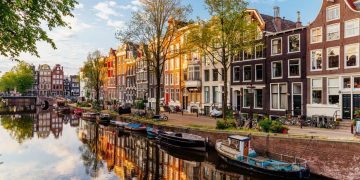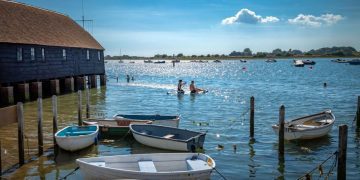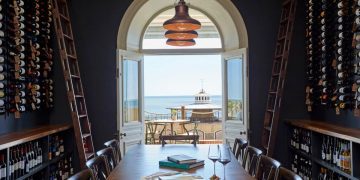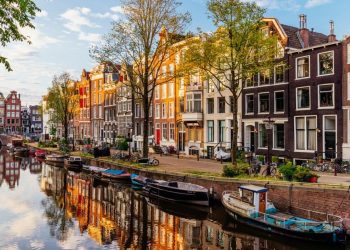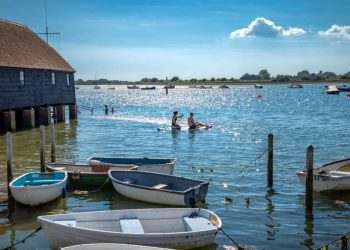
Metro journalists select and curate the products that feature on our site. If you make a purchase via links on this page we will earn commission – learn more
Most of us can only dream of being paid to travel, but for Helana Jackson, it’s a reality.
Working as cabin crew for Jet2 and Virgin Atlantic, the 30-year-old spent the early days of her career jetting off to destinations like New York, the Caribbean, Hong Kong, Canada, and Switzerland.
These days, she works as a TikTok micro-influencer, having built a loyal following by sharing tips on hidden gems and adventurous locations.
At Metro, we’re passionate about promoting off-the-beaten-path destinations. We support sustainable tourism and want to do our part to put places actively seeking visitors on the map.
We asked Helana to give us her top three European destinations that have lots to offer and a manageable amount of tourists. And spoiler: two are in Spain, one is in Italy.
Sign up to The Getaway newsletter
Fuel your wanderlust with our curated newsletter of travel deals, guides and inspiration. Sign up here.
As she tells us: ‘We’re only here once. If you can, you’ve got to get out there and see the world.’
La Manga, Spain
La Manga is synonymous with the La Manga Club, a sprawling luxury resort and a playground for the rich and famous.
But Helana says there’s more to this region, if you’re willing to scratch the surface.
Located in Murcia, Spain, La Manga is a narrow spit of land that divides the Mediterranean Sea and the Mar Menor, Europe’s largest saltwater lagoon.
While huge numbers of visitors descend on the region for its white sandy beaches and clear blue sea each year, this paradise still has many unspoiled corners.
One of these, Helana says, is Calblanque Beach, which is regularly featured in ‘best Spanish beach’ roundups by The Telegraph and Condé Nast.
For Helana, the best time to visit is spring. She says there are fewer crowds, and the weather averages around 23°C to 27°C. In the summer months, La Manga sees highs of 34°C.

Metro's favourite alternative destinations for 2025
- The forgotten Faroe Islands by Alice Murphy
- 96 hours in Gothenburg by Lucy Daltroff
- Antiparos, the ‘secret’ Greek island tourists haven’t ruined yet by Lillie-Rose Lenga-Kroma
- The Algarve’s enchanting deserted island by Gergana Krasteva
- Tbilisi, Europe’s last ‘hidden gem’ city break by Alice Murphy
Paddleboarding and windsurfing are popular there, but if you haven’t got the time (or the funds) to complete a windsurfing course, wingsurfing is a great introduction.
It uses a handheld, inflatable wing to propel you and your board across the water. A 90-minute wingfoil class costs €70 (£61).
Further down the coast in Cabo de Palos, the Islas Hormigas Marine Reserve is considered one of the best diving spots in Europe.
When it comes to food and drink, Helana says La Manga is generally quite affordable. She recommends Fanático Beach, a beach bar with sunbed hire and live music, and La Mestiza, a beach restaurant with sunset views. Here, a draught Heineken beer is €3.60 (£3), while a glass of wine is €5.50 (£4).
Looking for a twin break? La Manga is a 20-minute drive from Cartagena, Europe’s sunniest city.
Cogne, Aosta Valley, Italy
Helana went to Cogne by chance.
She searched for the cheapest flight available, booked a seat, and it turned out to be one of the most beautiful places she’s ever visited.
The village, in the Aosta Valley region of northern Italy, is flanked by snow-dusted mountains and forested slopes.
On a clear day, Helana says you can see Mont Blanc.
It’s less than two hours from Turin, which Helana describes as Milan without the crowds. And it’s cheap to get there; on Monday, August 25, a Ryanair flight from Stansted to Turin is only £18.
Helana’s highlights include Cascate di Lillaz, an ‘otherworldly’ waterfall that can be reached by an easy hike. She also recommends renting a bike and exploring the trails of Gran Paradiso National Park.
But her favourite moment from the trip was her time at Hotel Belvedere, a chalet perched above the village.
The journey there was breathtaking, along a winding road through the valley, and the food (homemade ravioli and local wine) was delicious and affordable.
Guadalest, Spain
Back to Spain for Helana’s final recommendation: Guadalest, a mountainous village in the Alicante province with 240 residents.
There are plenty of reasons to be fascinated by this tiny patch of paradise. It may be a 30-minute drive from the infamous party town of Benidorm, but Guadalest is worlds away from the boozy mayhem.
Forget Sticky Vicky — life is slow here. You’ll be kayaking, hiking, and exploring ancient ruins rather than revelling on the strip.
Helana’s recommendations include a hike to the reservoir and the walking trail from Guadalest to Beniardá and Benimantell.
The climb to Guadalest Castle, a 12th-century Moorish fortress, is a good choice for a combination of hiking and history. It’s challenging, but your reward is a panoramic view of the whitewashed village below.
Entry to the castle is €4 (£3.46), which includes access to the San Jose Castle ruins, the Alcozaiba prison, and the bell tower. There are plenty of museums in the castle grounds, such as the Micro-Gigantic Museum, Salt and Pepper Shakers Museum, and the Ethnological Museum.
Though Guadalest is traditionally a day-trip destination — from Alicante or Benidorm, you can spend six to eight hours exploring the Valley and the Algar waterfalls for around £69 — Helana recommends staying the night.
‘We were able to experience a slower, more authentic side of Spain.’
Helana stayed at Casa Oliveta, a rustic guesthouse just a six-minute drive from the main village. Prices per night range from £130 to £160, depending on room type.
In Guadalest, the evenings are calm and peaceful — perfect for watching the sunset and enjoying a relaxed dinner.
The best spot for all of the above is Restaurant L’Hort, a traditional Valencian eatery nestled high up in the mountains.
Helana concludes: ‘Guadalest gave us a taste of mountain life, with natural beauty, culture, and tranquility all in one spot.’













